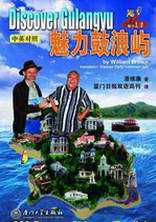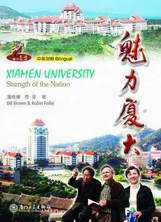![]() Click
to
Access
Click
to
Access
OUTSIDE China
![]() Click
to Access
Click
to Access
INSIDE
China ![]()
TRAVEL LINKS
![]() Xiamen
Xiamen
![]() Gulangyu
Gulangyu
![]() Jimei
Jimei
![]() Tong'an
Tong'an
![]() Jinmen
Jinmen
![]() Zhangzhou
Zhangzhou
![]() Quanzhou
Quanzhou
![]() Wuyi
Wuyi
![]() #1Fujian
Sites!
#1Fujian
Sites!
![]() Fujian
Foto Album
Fujian
Foto Album
![]() Books
on Fujian
Books
on Fujian
![]() Readers'Letters
Readers'Letters
![]() Ningde
Ningde
![]() Zhouning
Zhouning
![]() Longyan
Longyan
![]() Sanming
Sanming
![]() Putian
Putian
![]() Bridges
Bridges
![]() Travel
Info,
Travel
Info,
![]() Hakka
Roundhouses
Hakka
Roundhouses
![]() Travel
Agents
Travel
Agents
MISC. LINKS
![]() Amoy
People!
Amoy
People! ![]()
![]() Darwin
Driving
Darwin
Driving ![]()
![]() Amoy
Tigers
Amoy
Tigers
![]() Chinese
Inventions
Chinese
Inventions
![]() Tibet
in 80 Days!
Tibet
in 80 Days!![]()
![]() Dethroned!
Dethroned!
![]()
![]() Misc.Writings
Misc.Writings
![]() Latest
News
Latest
News
![]() Lord
of Opium
Lord
of Opium
![]() Back
to Main Page
Back
to Main Page
AmoyMagic--Guide
to Xiamen & Fujian
Copyright 2006 by Sue Brown & Dr.
Bill
![]() Hakka
Photo Album Click pictures
below for larger images
Hakka
Photo Album Click pictures
below for larger images
![]() Suggested
Itinerary (there & back in onepiece)
Suggested
Itinerary (there & back in onepiece) ![]() (CIA Hakka Silo Scare)
(CIA Hakka Silo Scare)
![]() Advantages
of Earthen Architecture
Advantages
of Earthen Architecture
Any
visit to West Fujian
must include the Hakka (“Guest People”) earthen castles, which
fascinate foreign and Chinese tourists, international architects, and
even the Pentagon (Reagan and the CIA
thought their spy satellites had revealed hundreds of missile
silos).
I asked a Hakka if his satellite dish was
for missiles. “No, no!” he said. “Television! Basketball!”
“ "Just joking!” I said, but that joke bombed.
“…the only ones
that are fairytale-like village buildings, shaped like a huge mushroom
out of the ground, and a UFO dropped from the clouds.”
Chinese Roundhouse Brochure
Most
earthen castles are not  tourist
traps. People really live and work here, and invariably, when
you show up on their doorstep they will grin and say, “You’ve
come! Have some tea!”"
tourist
traps. People really live and work here, and invariably, when
you show up on their doorstep they will grin and say, “You’ve
come! Have some tea!”"
Many
earthen houses are round. This not only keeps wives from cornering
their husbands, but also helps fend off bandits and warlords, as well
as their local "hosts", who did not always welcome the waves
of Han Chinese immigrants who 1,000 years ago showed up from the Central
Plains, said, “We’re the ‘Guest People,’”
and never left.
If my guests stuck around 1,000 years, I’d shred the welcome mat.
Click for more Hakka History
Hakka
Earthen Castles
are inexpensive to build and maintain, last forever (some are over
1,000 years old), and are so aesthetic they appear to have sprung from
the very earth itself.
Earthen homes are rammed into shape, layer by layer, using a mix of raw
earth, sand, lime, glutinous rice,
and brown sugar, and reinforced with ‘bones’ of bamboo and
wood. Only upper floors have outer windows, and the massive wooden gates
are sheathed in iron.
The first floor is
for cooking, eating, socializing,
and working. Grains and grandparents are stored on the second floor. The
spryer young folk live on the third and fourth floors. Central
courtyards usually have a well, mill, threshing floor, ancestral hall—everything
but a basketball court.
I've visited the
Hakka houses at least 30 times. I love driving the winding road through
Nanjing’s lush valleys, and then visiting Yongding’s earthen
castles, and returning to Xiamen via the Longyan-Xiamen highway. The trip
can be done in a one day 14 hour marathon, but it’s easier on the
body to spend a night in a roundhouse, and it gives you a chance to sample
unique local mountain delicacies, some of which have quit moving.
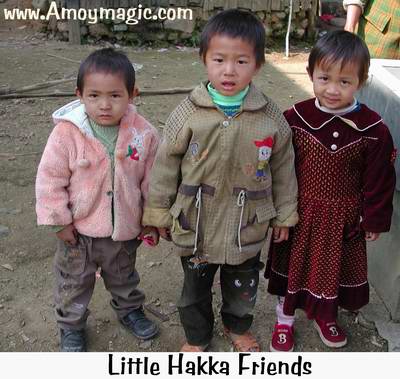 Only
about 360 earthen castles are round nowadays. The other 4,000 are square.
A complex of five castles built in the 1950s is said to represent the
five stars of China’s national flag. But my favorite roundhouse
is Prosperity Castle (Fuxing Lou) in
Nanjing’s Chizhou Village.
Only
about 360 earthen castles are round nowadays. The other 4,000 are square.
A complex of five castles built in the 1950s is said to represent the
five stars of China’s national flag. But my favorite roundhouse
is Prosperity Castle (Fuxing Lou) in
Nanjing’s Chizhou Village.
Prosperity
Castle (Fuxing Lou) was built in 1963 by the Xiao Clan.
The three-story roundhouse has two outer rings. I asked how much the building
cost to build. The wooden balconies, doors, and gates alone must have
cost a fortune.
“Not a penny!” said the headman “It took 3 years to
build, but the earth and wood were all local, and the Xia Clan provided
the labor…But trees are protected now, so no more roundhouses.”
Many
Generations Fuxing Lou is home to 4 generations of Xiao—about
214 people, from newborns to octogenarians. And like Chinese elsewhere,
they greet you with, “You’ve come. Have some tea!”
I reciprocate by bringing bags of candy for the kids, who of course are
too polite to accept it. So I have a granny divvy up the goodies (after
she pockets a few pieces that she’ll gum for the rest of the day).
American children often whine, “Dad, there’s nothing to do!”
But Fuxing Lou’s children are never idle.
After school, pig-tailed girls sing and skip rope, and boys play pebble
chess, hoop and stick, skip stones on the scummy duck pond, or pester
calico cats that regard Laowai and Laonei alike with their patented air
of regal indifference. Cats, worldwide, ignore the lesser human species
unless we’re too busy for them—in which case they’re
in our lap in an instant.
I’ve visited roundhouses at least a dozen times, and they were one of the first places I showed my sister, Galinda Fleming, when she visited China. She too fell in love with the people. But she wasn’t overly keen on the outdoor toilet, which was just a hut with two planks over a ditch. Bu Yao Jin! No worries, mate! I’m not sure if they got it on film, though, when I helped make a TV documentary about village life, and drove the film crew in Toy Ota to Prosperity Castle. The cameraman asked where the WC was and I said, “Bu Yao Jin.” No worries, mate! Step right this way!”
Hakkaland
enchantments
are endles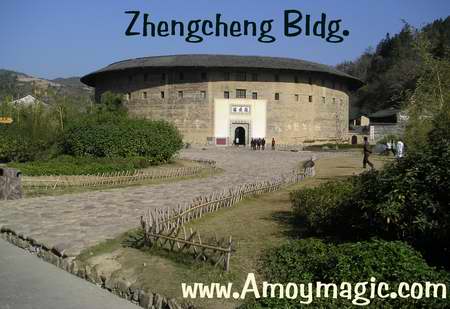 s,
but I think the absolutely most beautiful scene is just 15 or 20 minutes
west of Prosperity Castle. High on a curve, look down to the valley far
below on the right and you’ll see a cluster of over half a dozen
round and square earthen buildings, as well as a green roofed ancestral
temple.
s,
but I think the absolutely most beautiful scene is just 15 or 20 minutes
west of Prosperity Castle. High on a curve, look down to the valley far
below on the right and you’ll see a cluster of over half a dozen
round and square earthen buildings, as well as a green roofed ancestral
temple.
If you’re not up for the lovely but tiring traipse down the narrow
path, a couple of hundred meters further, a road leads off the right and
down into the valley, right to the roundhouse doors, and the inevitable
chorus of, “You’ve come! Have some tea.”
“Official”
Tourist sites
—Just for the record
Zhengcheng
Castle is, officially at least,
the
#1 earthen attraction. It was built in Hukeng Town’s Hongkeng Village
in 1912, and has two concentric
circles. The outer building has 48 rooms on each of four floors; the inner
circle has 30 rooms on two floors. An ancestral hall with four massive
granite pillars dominates the courtyard.
Chenqi Castle, in Guzhu Town’s Gaotou
Village, was built in 1709. This 5,300 sq. m. castle has 400 rooms, 3
gates, 2 wells, 400 people in 60 households, 14 cats, 37 kittens, and
a few mutts who have miraculously escaped the wok. The outermost wall
is 73m in diameter, four stories high, and has 72 rooms. The middle circle
has two floors and 80 rooms. The inner circle has one floor and 32 rooms.
Extinguished ancestors hold court in the central ancestral hall.
Yijing Castle, in Gaobo
Town’s Shanya ng
Village, was built in 1851, and has a 136m by 76m rectangular outer wall.
The main tower in the rear is 5 ½ stories high, and the adjoining
three buildings are 3 stories high. The castle has 280 rooms, 51 halls,
two schools, and three flea-bitten dogs far too scrawny to stew.
ng
Village, was built in 1851, and has a 136m by 76m rectangular outer wall.
The main tower in the rear is 5 ½ stories high, and the adjoining
three buildings are 3 stories high. The castle has 280 rooms, 51 halls,
two schools, and three flea-bitten dogs far too scrawny to stew.
“It was a hobbit-hole, and that means comfort.” J.R.R.Tolkien,
“The Hobbit.”
Earthen architecture is gaining popularity worldwide.
![]() Click
Here to read about the advantages of
Earthen Architecture
Click
Here to read about the advantages of
Earthen Architecture
Zhengzheng
Bldg. Hakka Cultural Village
I used to take visitors only to the "real-life" earthen villages,
and skipped the so-called tourist trap, but since the Yongding government
created it's Hakka Cultural Village, I've
changed my tune. They tore down much of the new, imappropriate architecture,
and now the entire area is much like a Hakka Park. Even the W.C. (public
toilet, for us Americans) is designed like a roundhouse! The professional
tour guides at Zhengcheng building give excellent introductions to the
history and culture behind the Hakka earthen buildings, and how they are
built. And just outside the gate, locals Hakkas will off you inexpensive
rooms for the night (only 40 Yuan a night--5$ USD, with private bath).
It's worth spending a few days there!
A
Bit of Hakka History
The Hakka fled south to escape war and famine during the Qin Dynasty (221-206
BC), when Han general Ran Min slaughtered the Jie tribe because they had
bigger noses. While Hakkas headed south, the nomad Huns fled west. Some
Chinese scholars claim the Huns settled Hungary. 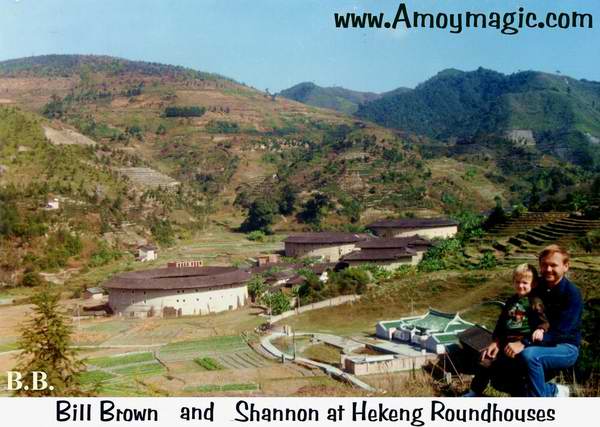
How ironic that Huns fleeing famine still went Hungary.
Hungry Huns have vanished, but industrious Hakka, who emphasized agriculture, self-sufficiency,
and education, hang
in there. Fiercely proud of their Han heritage, Hakkas are more meticulous
than Mormons in keeping genealogical records. A Malaysian Hakka, Eng-Seng
Teoh, claims to be a 149th generation descendant from the mythical Yellow
Emperor! The Hakka may even have relatives in Japan.
Hakka
Japan? About 219 B.C., Qin Dynasty Emperor Shi sent Xufu
with 3000 boys and girls to obtain longevity pills from present day Kyushu,
Japan. Either he never found the pills or he got a pirated batch, because
Xufu died. His tomb is still in Japan, and the Yamato clan is his crew’s
descendants.
 Xufu’s
arrival in Japan happened to coincide with Japan’s evolution from
hunting and fishing to a sophisticated civilization similar in many ways
to the Qin Dynasty. Even today, every 50 years the Japanese celebrate
the birth year of Shen Wu Tian Huang, the Father of Japan, who lived around
Xufu’s time. So who knows? Maybe even Japan was “Made in China!”
Xufu’s
arrival in Japan happened to coincide with Japan’s evolution from
hunting and fishing to a sophisticated civilization similar in many ways
to the Qin Dynasty. Even today, every 50 years the Japanese celebrate
the birth year of Shen Wu Tian Huang, the Father of Japan, who lived around
Xufu’s time. So who knows? Maybe even Japan was “Made in China!”
Linguists
say Hakka resembles Japanese, and I agree. Both are unintelligible. And
DNA tests show similarities between Japanese, Koreans and Hakkas. It is
also said that Hakka and Japanese are alike in their stubbornness and
adherence to tradition—though if stubbornness is a factor, my blond
wife Susan Marie is Hakka, Japanese, or both.
Back
to Top AmoyMagic
Guide to Xiamen and Fujian
![]() Favorite
Fujian Sites
Favorite
Fujian Sites ![]() Fujian
Foto Album
Fujian
Foto Album ![]() Xiamen
Xiamen
![]() Gulangyu
Gulangyu
![]() Fujian
Guides
Fujian
Guides ![]() Quanzhou
Quanzhou
![]() Zhangzhou
Zhangzhou
![]() Longyan
Longyan
![]() Wuyi
Mtn
Wuyi
Mtn ![]() Ningde
Ningde
![]() Putian
Putian
![]() Sanming
Sanming
![]() Zhouning
Zhouning
![]() Taimu
Mtn.
Taimu
Mtn. ![]() Roundhouses
Roundhouses
![]() Bridges
Bridges
![]() Jiangxi
Jiangxi
![]() Guilin
Guilin
![]() Order
Books
Order
Books
![]() Readers'
Letters
Readers'
Letters
Last Updated: May 2007
Last Updated May 2008
DAILY
LINKS
![]() FAQs
Questions?
FAQs
Questions?
![]() Real
Estate
Real
Estate
![]() Shopping
Shopping
![]() Maps
Maps
![]() Bookstores
Bookstores
![]() Trains
Trains
![]() Busses
Busses
![]() Car
Rental
Car
Rental
![]() Hotels
Hotels
![]() News
(CT)
News
(CT)
![]() Medical
& Dental
Medical
& Dental
![]() YMCA
Volunteer!
YMCA
Volunteer! ![]()
![]() XICF
Fellowship
XICF
Fellowship
![]() Churches
Churches
![]()
![]()
![]() Temples
Temples![]()
![]() Mosque
Mosque
![]() Expat
Groups
Expat
Groups
![]() Maids
Maids
![]() Phone
#s
Phone
#s
EDUCATION
![]() Xiamen
University
Xiamen
University
![]() XIS(Int'l
School)
XIS(Int'l
School)
![]() Study
Mandarin
Study
Mandarin
![]() CSP(China
Studies)
CSP(China
Studies)
![]() Library
Library
![]() Museums
Museums
![]() History
History
DINING
![]() Restaurants
Restaurants
![]() Asian
Asian
![]() Veggie
Veggie
![]() Junk
Food
Junk
Food
![]() Chinese
Chinese
![]() Italian
Italian
![]() International
International![]()
![]() Visas
4 aliens
Visas
4 aliens
RECREATION
![]() Massage!
Massage!
![]() Beaches
Beaches
![]() Fly
Kites
Fly
Kites
![]() Sports
Sports
![]() Boardwalk
Boardwalk
![]() Parks
Parks
![]() Pets
Pets
![]() Birdwatching
Birdwatching
![]() Kung
Fu
Kung
Fu ![]() Hiking
Hiking
![]() Music
Events
Music
Events
![]() Festival&Culture
Festival&Culture
![]() Humor&
Humor&![]() Fun
Fotos
Fun
Fotos![]()
BUSINESS
![]() Doing
Business
Doing
Business
![]() Jobs!(teach/work)
Jobs!(teach/work)
![]() Hire
Workers
Hire
Workers
![]() Foreign
Companies
Foreign
Companies
![]() CIFIT
(Trade Fair)
CIFIT
(Trade Fair)
![]() MTS(Translation)
MTS(Translation)

